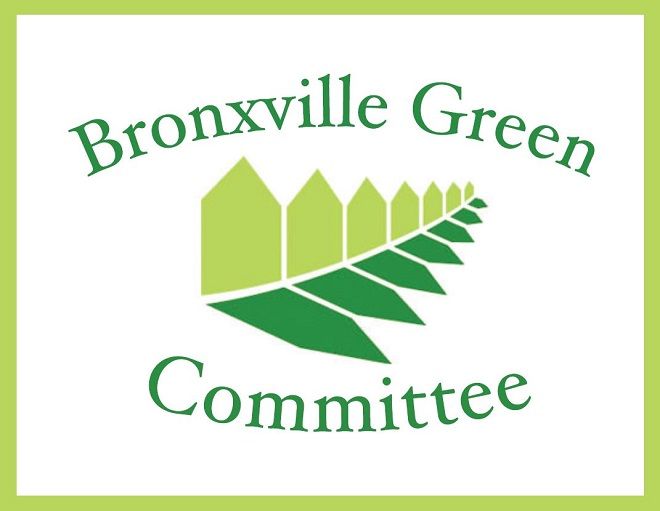How the Plastic Bag Ban Will Improve Your Health

Editor's Note: Carole Upshur, EdD, is Professor Emeritus, Department of Family Medicine and Community Health, University of Massachusetts Medical School, and a member of the Bronxville Green Committee.
By Carole Upshur
Feb. 3, 2021: On October 19, 2020, New York State began enforcing the ban on single-use plastic bags. The law will reduce the staggering 23 billion plastic bags distributed each year in New York State. Reducing our use of plastic will improve human health.
How Does the Law Affect You?
Many retail stores can no longer provide plastic bags; often, they offer paper instead, but paper also has a negative environmental impact.
Please, let’s bring our own reusable bags when shopping.
The law allows retailers to charge 5 cents per paper bag, but so far in Westchester, only White Plains has implemented this fee. New York City and a couple of other counties charge it.
Which Plastic Bags Are Exempt?
The long list of exempt bags includes plastic bags used for bulk fruits and vegetables, deli meat or fish, takeout food, prescription drugs, dry cleaner and newspaper sleeves, and food storage bags for home use.
Once we’re in the habit of bringing our own bags, we might find it just as convenient to use them for many of these purchases as well.
What Is “Film” Plastic and How Can I Recycle It?
The law specifically requires large retail establishments, including most grocery stores, to provide bins to collect single-use plastic bags and other types of film plastic.
Film plastic includes a long list: single-use plastic bags, bread wrappers, produce bags, newspaper sleeves, dry cleaning bags, stretch wrap, bubble wrap, shipping envelopes (must be all film, labels removed), zip food storage bags, etc.
Food containers, compostable bags, salad or frozen food bags, and six pack rings are NOT acceptable.
For more information, click here.
As of this writing, Acme in Bronxville has not replaced the collection bin for film plastic that it removed from in front of the store last March; we anticipate that they come into compliance soon. Stop & Shop, Whole Foods, Country Market, and Stew Leonard’s all provide collection bins, either just outside the store or inside, where other recyclables are collected.

Caring for Reusable Bags
Washing reusable bags is important, as is storing them dry. To prevent spreading germs, it’s best to separate meat, fish, and poultry from fresh produce and keep entirely separate packaged foods such as bread, cookies, chips, prepared foods, etc.
Try not to use your grocery bags for other tasks like carrying a casserole or your gym clothes. For tips for how to clean reusable bags: www.health.ny.gov/publications/2827.
Plastic Pollution
Plastic bags create unsightly litter, clog up landfills, and play havoc in the oceans where they all too often end up, but they are a tiny part of a much larger problem.
Since World War II, there has been an explosion in the use of plastics in this country and, more recently, around the world. Plastic has been extremely helpful in delivering health care, expanding the availability of consumer products, and reducing the cost of everyday retail items. But plastic also causes environmental havoc.
Negative Effects on the Environment and Human Health
-Plastic is produced by the extraction of fossil fuels, which creates pollution and greenhouse gases harmful to the planet.
-Refining and producing plastic and plastic products creates toxic carcinogenic byproducts that get into air, water, and soil.
-Plastic particles are found in things you don’t expect: in dust (automobile tires now contain some plastic polymers), in micro beads added to toothpaste and shampoo, in fabrics, even in tea bags.
-Over time, plastic breaks down into micro particles; as that occurs, toxins chemically attached to those particles are released into the environment.
-Humans ingest these toxins and micro particles, which cause cancer, interfere with human development, and disrupt endocrine systems. Microplastic has been found in fish, human flesh, and breast milk.
-Plastic pollution from landfills and incineration facilities (Bronxville’s trash is incinerated) further contaminates the air, soil, and water.
We don’t know much about the health effects when plastics are incorporated into our lungs, our digestive systems, our brains, or their effect on our immune systems. Studies underway in Europe are seeking answers to these questions.
Plastic Never Goes Away
Plastic never disappears from the environment. It only breaks down into smaller and smaller pieces that continue to impact the ecology and human health. Over 9 billion metric tons have been produced in the last 70 years, or more than 4.5 lbs. per person per day, of which only 20% is still in use, 2% is regularly incinerated, and less than 10% is recycled.
Recycling Plastic
In Westchester, we do have a robust program for recycling plastic. Plastic labeled #1-7 is collected and brought to the Material Recovery Facility in Yonkers. There, 100% of the plastic collected is resold to manufacturers to be repurposed into new products; this program brings millions of dollars into county coffers.
Our program could be a model for the rest of the country. But plastic degrades each time it is recycled until it can’t be recycled anymore.
Single-use plastic makes up 40% of all plastic production--plastic bags, containers, utensils, straws, etc. Switching from single-use plastic bags to reusable, non-plastic bags is worth our effort.
Research
Researchers are trying to find ways to recycle more plastic and manufacture it into new products. The ultimate goal is a circular economy in which we can recycle plastic indefinitely.
Ongoing research seeks natural processes that may result in breaking down plastics into less harmful byproducts. One scientist has found bacteria that will consume and metabolize plastic, but the process works only in small amounts and very slowly.
Coming next: small steps we can take now to eliminate plastic from our lives.
Photo courtesy Bronxville Green Committee
Editor's note: As a public service, MyhometownBronxville publishes articles from local institutions, officeholders, and individuals. MyhometownBronxville does not fact-check statements therein, and any opinions expressed do not necessarily reflect the thinking of its staff.
Government & History Directory
Bronxville is a quaint village (one square mile) located just 16 miles north of midtown Manhattan (roughly 30 minutes on the train) and has a population of approximately 6,500. It is known as a premier community with an excellent public school (K-12) and easy access to Manhattan. Bronxville offers many amenities including an attractive business district, a hospital (Lawrence Hospital), public paddle and tennis courts, fine dining at local restaurants, two private country clubs and a community library.
While the earliest settlers of Bronxville date back to the first half of the 18th century, the history of the modern suburb of Bronxville began in 1890 when William Van Duzer Lawrence purchased a farm and commissioned the architect, William A. Bates, to design a planned community of houses for well-known artists and professionals that became a thriving art colony. This community, now called Lawrence Park, is listed on the National register of Historic Places and many of the homes still have artists’ studios. A neighborhood association within Lawrence Park called “The Hilltop Association” keeps this heritage alive with art shows and other events for neighbors.
Bronxville offers many charming neighborhoods as well as a variety of living options for residents including single family homes, town houses, cooperatives and condominiums. One of the chief benefits of living in “the village” is that your children can attend the Bronxville School.
The Bronxville postal zone (10708, known as “Bronxville PO”) includes the village of Bronxville as well as the Chester Heights section of Eastchester, parts of Tuckahoe and the Lawrence Park West, Cedar Knolls, Armour Villa and Longvale sections of Yonkers. Many of these areas have their own distinct character. For instance, the Armour Villa section has many historic homes and even has its own newsletter called “The Villa Voice” which reports on neighborhood news.
Link to Village of Bronxville One Square Mile Monthly Newsletter
Village of Bronxville Administrative Offices
337-6500
Open 9:00am - 4pm excluding holidays and weekends
Bronxville Police Department
337-0500
Open 24 hours
Bronxville Parking Violations
337-2024
Open 9:00am - 4pm excluding holidays and weekends
Bronxville Fire Deparment
793-6400



















